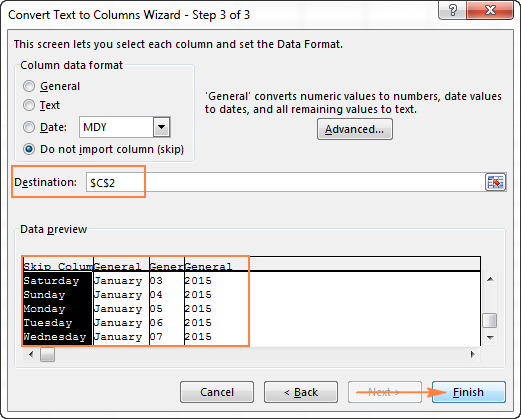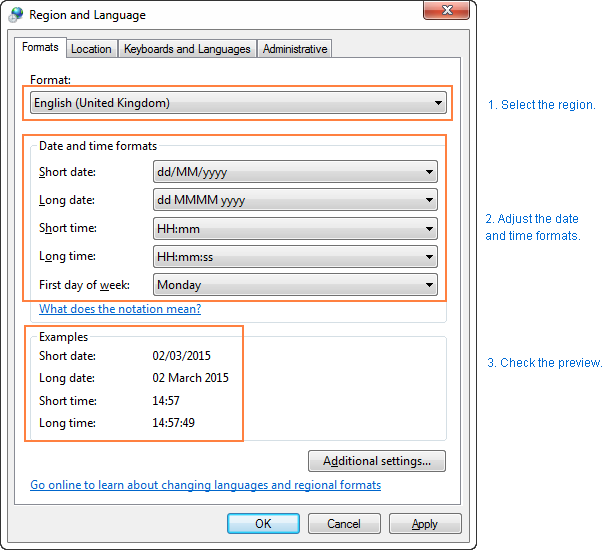Access Convert Date Serial Number


If your spreadsheet contains text representations of dates, rather than actual dates (stored internally as integers by Excel), this may produce errors when you try to use these dates in calculations. Therefore, this page describes three different methods that you can use to convert text to a date in Excel. Excel Convert Text to Date Index:Convert Text to a Date Using Excel Error CheckingExcel has an error checking option that can alert you to the presence of cells containing text representations of dates with two-digit years. This will be seen as a small colored triangle (the error indicator) in the top left corner of your cells (see below). From the drop down menu alongside the Date option, select the format that applies to the dates in your spreadsheet (see right above). Click the Finish button.Convert Text to a Date Using the Excel Datevalue FunctionThe converts a text representation of a date into an Excel date serial number.Note that, after using the function to convert a text string into a date, you need to make sure that the cell containing the function is formatted as a date. Datevalue Function ExamplesCells A1-A3 of the spreadsheets below contain three different text representations of the date 01 January 2016.The Excel Datevalue function is used in column B of the spreadsheet, to convert these text values into date serial numbers.
Results:AB1423702370301 Jan 201642370In the above 'results' spreadsheet, column B is formatted with the 'General' format type. Therefore, the date serial number 42370 is displayed as an integer.If you want to display the contents of column B as dates, you need to change the formatting of these cells to have a date format.The easiest way to do this is to select the cell(s) to be formatted and then select the Date cell formatting option from the drop-down menu in the 'Number' group on the Home tab of the Excel ribbon (see below).
MS Access: Format Function (with Dates)This MSAccess tutorial explains how to use the Access Format function (as it applies to date values) with syntax and examples. DescriptionThe Microsoft Access Format function takes a date expression and returns it as a formatted string. SyntaxThe syntax for the Format function in MS Access is: Format ( expressionformatfirstdayofweek, firstweekofyear ) Parameters or Arguments expression The value to format. It is the format to apply to the expression.
You can either define your own format or use one of the named formats that Access has predefined such as: FormatExplanationGeneral DateDisplays date based on your system settingsLong DateDisplays date based on your system's long date settingMedium DateDisplays date based on your system's medium date settingShort DateDisplays date based on your system's short date settingLong TimeDisplays time based on your system's long time settingMedium TimeDisplays time based on your system's medium time settingShort TimeDisplays time based on your system's short time settingfirstdayofweekOptional. It is a value that specifies the first day of the week. If this parameter is omitted, the Format function assumes that Sunday is the first day of the week. This parameter can be one of the following values: ConstantValueExplanationvbUseSystem0Uses the NLS API settingVbSunday1Sunday (default, if parameter is omitted)vbMonday2MondayvbTuesday3TuesdayvbWednesday4WednesdayvbThursday5ThursdayvbFriday6FridayvbSaturday7SaturdayfirstweekofyearOptional. It is a value that specifies the first week of the year.

Access Convert Yyyymmdd To Date
If this parameter is omitted, the Format function assumes that the week that contains January 1 is the first week of the year. This parameter can be one of the following values: ConstantValueExplanationvbUseSystem0Uses the NLS API settingvbFirstJan11The week that contains January 1vbFirstFourDays2The first week that has at least 4 days in the yearvbFirstFullWeek3The first full week of the yearReturnsThe Format function returns a string value.